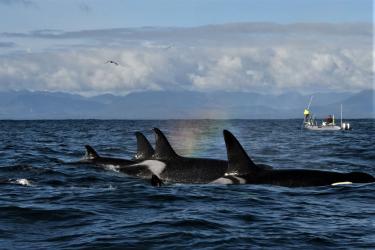Starting with the 1989 Exxon Valdez oil spill in Alaska, NOAA has since been working to restore areas impacted by oil spills, hazardous waste releases, and ship grounding incidents in communities across the nation.
When events like these occur—which can happen hundreds of times each year—NOAA and teams of state, tribal, and federal agencies, called Trustees, respond to assess the damaged resources and eventually restore them.
- We try to work cooperatively with those responsible for environmental harm. When cooperation is not attainable, the Trustees recover funds through litigation and settlement agreements. Since 1991, we’ve recovered more than $10 billion from responsible parties for a variety of restoration activities across the nation.
- Funds are recovered on behalf of the public, and go toward restoring sites back to the natural conditions they had before the incidents. If we can’t restore the original site, we work in nearby areas and with similar resources.
- In partnership with Trustees, the NOAA Restoration Center leads restoration of coastal and marine resources and habitat. We restore wetlands, beaches, reefs, corals, and seagrasses, and work to open fish passage on many miles of streams. Funds can also be used to restore recreational uses like fishing, boating, and swimming.
The process, from incident response to restoration, is guided by experts with coastal and marine science, economic, and legal expertise. A number of laws, regulations, and policies make up the framework for the Natural Resources Damage Assessment process. This guides the Trustees’ understanding of pollution impacts to natural resources, and how they should be restored.
Why Do We Restore?
Oil Spills Injure Fish, Wildlife and Habitats
Oil spills—ranging from just a few gallons to millions of barrels—occur in the U.S. all too often. The 2010 Deepwater Horizon incident in the Gulf of America (formerly Gulf of Mexico) is an example of the extensive environmental and economic damage caused by an oil spill.
Oil injures fish and wildlife, and may smother or destroy sensitive habitat, altering migration patterns and negatively affecting life cycles. Oil spills can also lead to beach closures and restrictions on local fisheries, negatively impacting local economies.
Hazardous Waste Pollutes Waterways
Pollution from past and current commercial and industrial activities has impaired our coasts and rivers. Chemicals like PCBs, and toxic metals such as lead and mercury can be released into coastal habitat and waterways compromising resources and quality of life in coastal communities.
These pollutants can be absorbed by aquatic life and build up in sediments, leading to poor fish health, decreased fish and shellfish populations, habitat loss, and restrictions on fishing and other recreational activities.
Ship Groundings Damage Reefs
Ships of all sizes sometimes run aground in our nation's waters, despite improved navigation aids. When a ship runs aground, there can be impacts to reefs, beaches, and seagrass beds. These environments are often important habitat for fish and other marine life, and to the economies and cultures of the surrounding coastal communities.
Science Leads the Way to Restoration
NOAA relies on many scientific and economic methods to determine how these events harm the environment, and how to restore them. Ecological studies, and biological and chemical analyses are used to evaluate the extent of injuries to plants and animals. Economic analyses help identify and quantify impacts on recreational uses such as boating and fishing. Scientific studies, research, and expertise help us decide the types of restoration to implement. We use all of this information, along with public input, to develop restoration plans and projects.
Along with using the latest restoration science methods available to inform restoration design, we monitor the success of our projects after implementation. Monitoring can continue for years after restoration is complete to make sure projects are successful. We use adaptive management techniques to ensure that restoration projects are successful, by fine tuning them based on monitoring results and improved scientific understanding.
Restoration enhances fisheries and wildlife, and restores protected species and sensitive habitat including wetlands, beaches, reefs, corals, and seagrasses. It also provides economic benefits from more recreation, tourism, blue economy jobs, coastal resilience, and quality of life.







